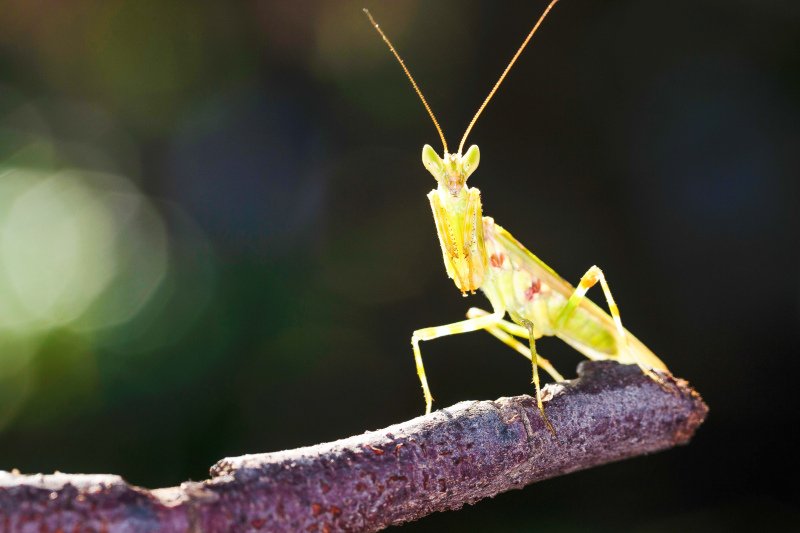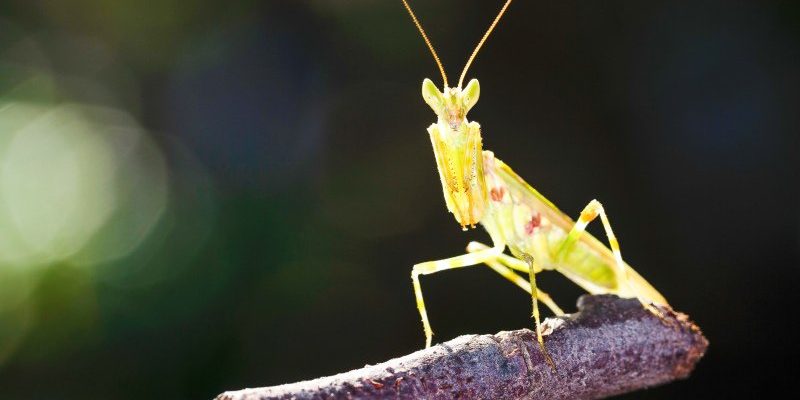
When we think about the mantid, it’s easy to assume they thrive in warm places, like tropical jungles or sunny gardens. While those are indeed some of their homes, they actually have a much wider range. Think of them like little ninjas, seamlessly blending into their surroundings, whether in a bustling garden or a quiet forest. Let’s take a closer look at the various places where mantids live and how they adapt to survive in those diverse habitats.
Natural Habitats of Mantids
Mantids can be found in a variety of environments, which is part of what makes them so interesting. They live in places like:
- Forests: Mantids thrive in dense forests where they can hide among the foliage. The trees provide ample nooks and crannies for ambush hunting.
- Grasslands: These insects are often spotted in fields and meadows, where tall grasses serve as both cover and hunting grounds.
- Gardens: Many people encounter mantids in gardens, where they play a crucial role in controlling pest populations.
Each of these habitats offers unique benefits. In forests, mantids can easily camouflage themselves and find plenty of food. In grasslands, the open space allows them to spot prey from a distance. Gardens, on the other hand, are often filled with insects, making them a true buffet for mantids.
Urban Environments
You might be surprised to learn that mantids can even adapt to urban areas. Think about it: parks, backyards, or even window gardens can serve as a home for these incredible insects. They often hide among flowers and shrubs, hunting down pests that are common in these settings. That not only helps them survive, but it also makes them valuable allies for gardeners and homeowners trying to manage their plants naturally.
How Mantids Blend In
One of the most remarkable traits of mantids is their ability to blend in with their environment. This skill is key to both their hunting strategy and their defense mechanisms. Here’s how they do it:
- Camouflage: Mantids have bodies that mimic the colors and textures of their surroundings. For instance, a green mantid might rest on a leaf, making it nearly invisible.
- Body Shape: Their elongated bodies and unique postures allow them to resemble twigs or branches. This not only helps them avoid predators but also aids in stalking their prey.
The combination of these adaptations helps mantids remain undetected. It’s like they wear a cloak of invisibility, allowing them to launch surprise attacks on unsuspecting insects. Think of it as nature’s version of a tactical stealth operation!
Active Hunting Strategies
Aside from blending in, mantids are skilled hunters. They’re ambush predators, meaning they lie in wait for their prey to come close before striking. Their front legs are equipped for snatching – quick and powerful. When a fly buzzes too close, a mantid can grab it in the blink of an eye. It’s like watching a skilled magician pull a rabbit out of a hat!
Adaptation to Climate Variations
Mantids are incredibly adaptable to different climates. They’re found on every continent except Antarctica, which tells you a lot about their resilience. Here’s how they manage to stay alive in various conditions:
- Temperature Regulation: In hotter regions, mantids tend to be more active during cooler parts of the day. They may rest during the peak heat to avoid dehydration.
- Hibernation: In colder climates, many species enter a state of diapause, which is kind of like a deep sleep, helping them survive winter.
Their ability to fine-tune their behavior to suit the temperature is impressive. It’s like having a built-in thermostat that tells them when to slow down or speed up!
Water Conservation
Mantids have also adapted to make the most of limited water sources. In dry regions, they get moisture from their prey, which is essential for staying hydrated. This allows them to thrive in environments where other insects might struggle to survive. Imagine having a built-in water bottle just by eating!
Reproduction and Habitat Selection
When it comes to reproducing, mantids are particular about their habitats. They usually prefer places that offer enough cover for their eggs. Female mantids lay their eggs in a protective case called an ootheca, which they attach to plants or debris. This ensures the eggs are safe from predators and environmental challenges.
The choice of habitat is crucial; a good location increases the chances of survival for the next generation. If you’ve ever spotted the egg cases in your garden, you likely saw the future population of mantids just waiting for the right conditions to emerge.
Life Cycle and Adaptation
The life cycle of a mantid includes several stages: egg, nymph, and adult. Nymphs resemble mini versions of adult mantids, and they molt several times as they grow. This molting is a way to adapt to their environment as they seek out food and avoid predators. Each stage involves honing their hunting skills and dishing out the same killer moves as adults, emphasizing adaptability throughout their lives.
The Role of Mantids in Their Ecosystem
Mantids aren’t just fascinating creatures; they play a significant role in their ecosystems. As predators, they help control the populations of various insects, preventing any one species from becoming too dominant. This balance is essential for maintaining healthy ecosystems, especially in gardens and agricultural areas.
By keeping pest numbers down, mantids benefit not only their immediate habitat but also humans who rely on plants for food and beauty. It’s like having a natural pest control team working quietly in the background.
Challenges Faced by Mantids
Despite their adaptability, mantids face challenges such as habitat loss and climate change. As cities expand and natural habitats are destroyed, these insects find it increasingly difficult to survive. By learning about them and recognizing their importance, we can help protect their habitats and the delicate balance of our ecosystems.
Learning about where the mantid lives and how it adapts gives us a deeper appreciation for these remarkable insects. From their camouflage skills to their strategic reproductive choices, mantids are true survivors. Their presence enriches ecosystems and reminds us of the intricate connections in nature.
So next time you spot a mantid quietly perched in your garden, take a moment to recognize the little ninja at work. Each mantid is a testament to nature’s creativity and resilience, teaching us how life can thrive even in unexpected places.

